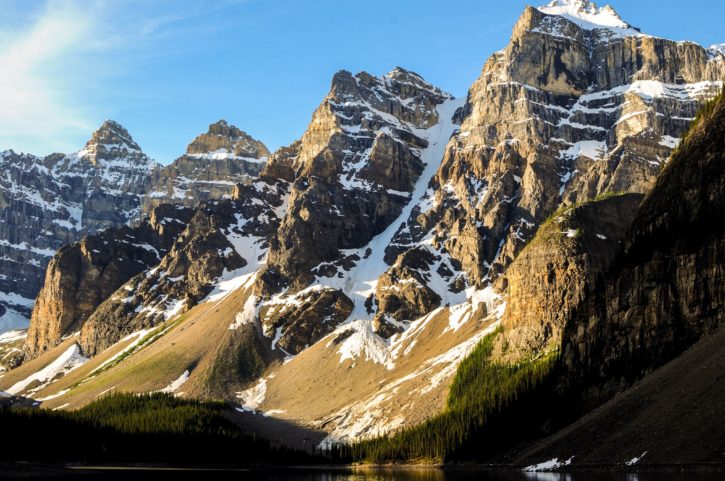9/8 Practice Circle: Mountains Flowing

I recently returned from a vacation in the Rockies, where we stayed in a little cabin near the tree line. We had a wonderful view of a hilltop just across the valley, with patches of snow lingering in the August heat. We spent hours on the front porch watching that mountain as the sun moved across its face, clouds dappled it with their shadows, and streaks of rose and purple radiated from it at sunset.
It was a good place to read one of Zen master Eihei Dogen’s most famous essays, his Mountains and Waters Sutra. Dogen founded the Soto school of Zen in Japan in the 13th century CE after studying with Chan masters in China. As a result, he’s particularly fond of using words to throw his readers off guard, challenging them to see beyond their comfortable habits of perception and thought. Mountains and Waters is , a prime example as Dogen commands his reader to see that, like water, mountains flow.
Mountains and waters right now are the actualization of the ancient buddha way. Each, abiding in its phenomenal expression, realizes completeness. Because mountains and waters have been active since before the Empty Eon, they are alive at this moment. Because they have been the self since before form arose they are emancipation-realization . . .
You should not just remain bewildered and skeptical when you hear the words, “Mountains flow”; but together with buddha ancestors you should study these words. When you take one view you see mountains flowing, and when you take another view, mountains are not flowing. One time mountains are flowing, another time they are not flowing. If you do not fully understand this, you do not understand the true dharma wheel of the Tathagata.
This kind of writing used to mystify me, and it often still does. These days, I interpret this passage through the lens of Eugene Gendlin, the psychologist and philosopher who invented the contemplative technique, Focusing. Gendlin thought that, rather than seeing things as individual objects located in their environment, it is more useful to understand them as processes that flow from and within the many complex processes that they arise from. Seeing in this way, the mountain, however solid and eternal it may look to us, arose from the geological forces that formed it and give it substance, and is constantly changing, on its way to becoming something else. Therefore, the mountain could not exist without the complex of interrelated processes that give rise to it. This continual flowing of everything within everything is the true nature of reality, and it means that the reality of anything we see is contained in and an expression of everything else. This is as true of each of us as it is of a mountain or a stream. For all our physical boundaries and personal histories, we are really the process of life carrying itself forward from before us to beyond us; because the mountains flow, we flow, and vice versa.
The first Buddhists in India understood this concept, and created a variety of contemplative techniques, such as Four Elements mediation, to help us realize our intimate, ever-changing connection to the world. Dogen goes a step further. The mountain’s flowing, he tells us, is the mountain’s dharma practice. His implication is that realization is not a sublime mental or spiritual state, or the understanding of some complex dogma. It is simply to realize that one is flowing, and to deeply allow one’s process to flow appropriately.
When the SBA Practice Circle meets this Sunday, September 8, at 8 pm Central, we’ll share a practice to help us experience life flowing through us. Practice Circle is the SBA’s online meditation and discussion community. We meet via video conference on the second and fourth Sundays of each month. Practice Circle is free to attend, and everyone is welcome. Just click this link on Sunday evening to attend.
